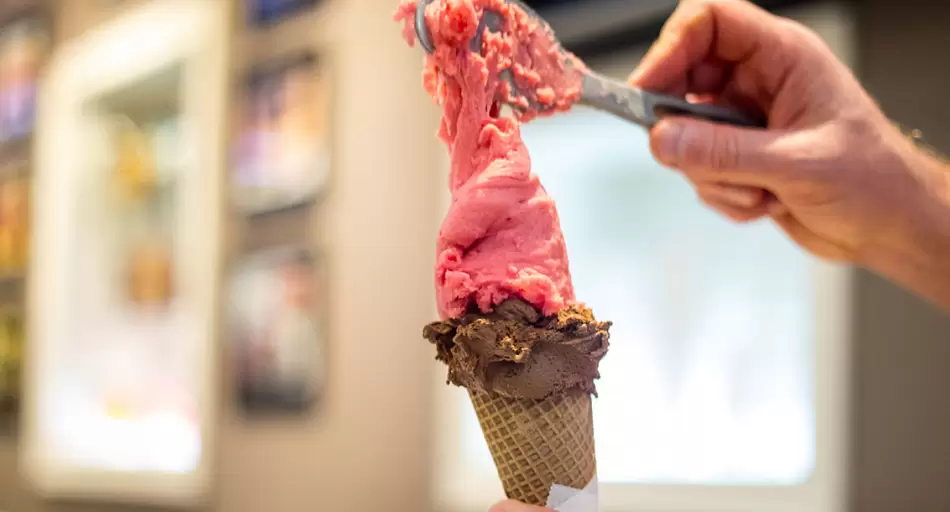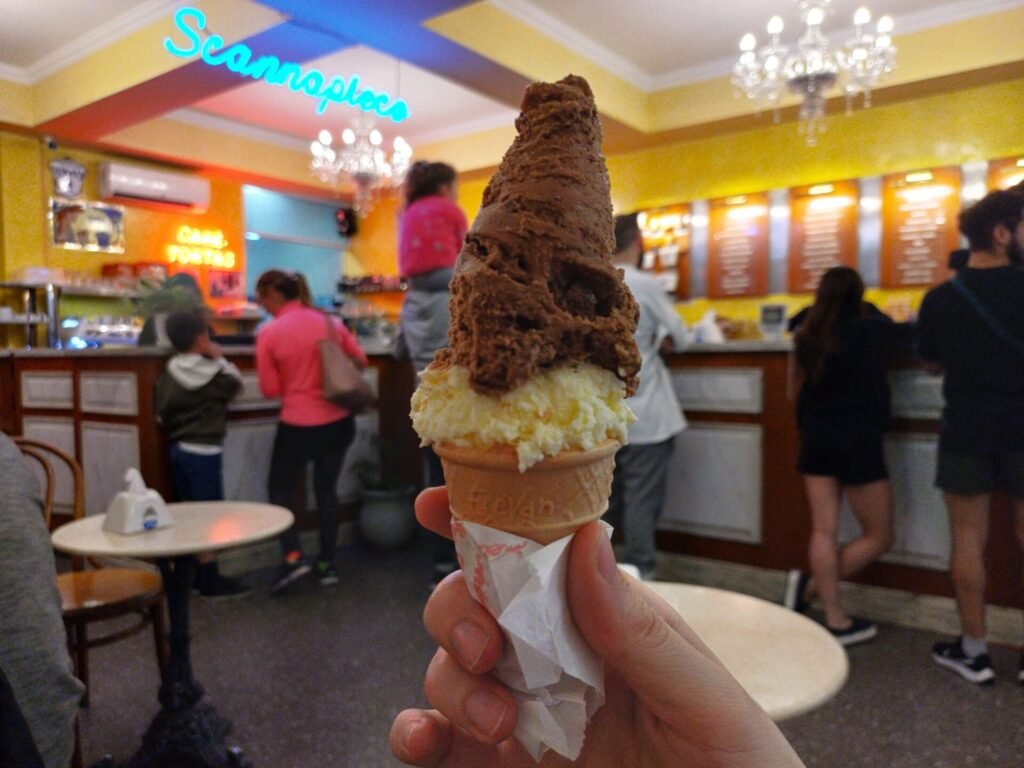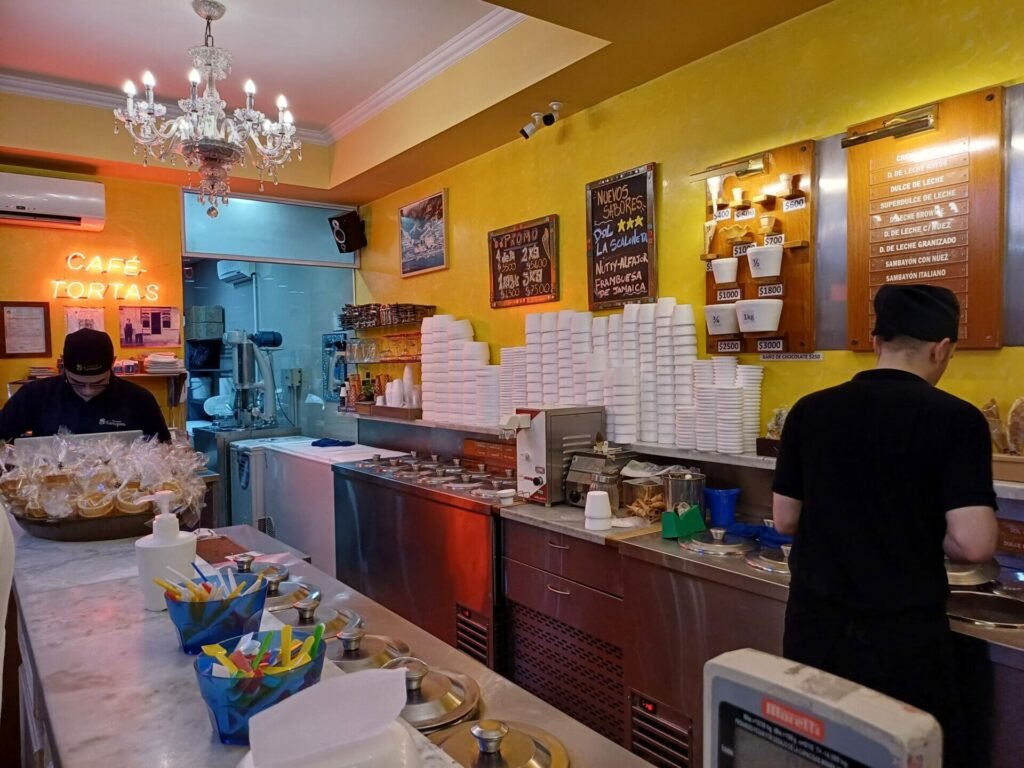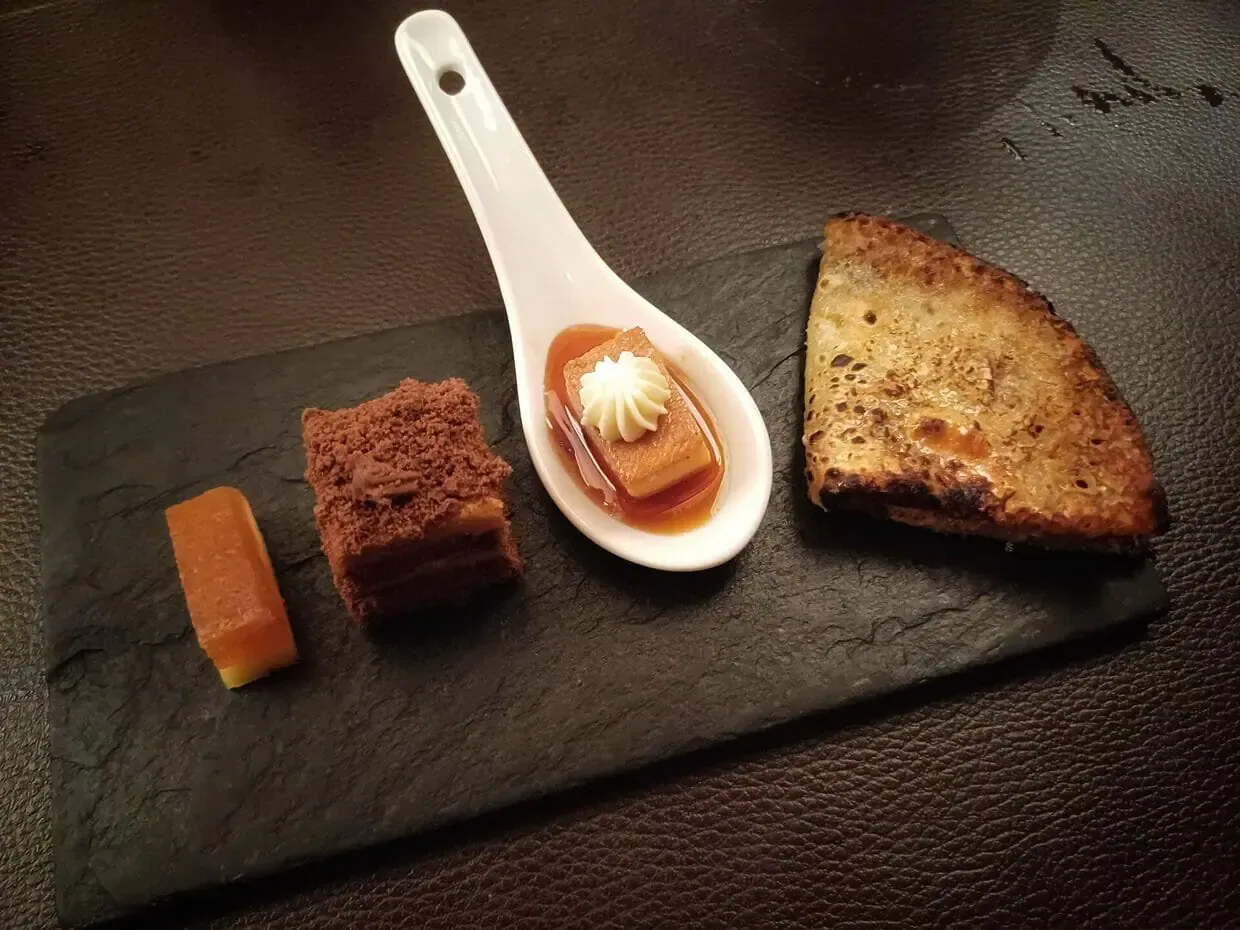Argentina has some of the best ice cream in the world, and if you don’t believe it, then you haven’t tried it yet. As local experts, dedicated foodies, and hosts of the best culinary experience in Buenos Aires, we encourage visitors to make the time for some helado during their stay – it will be more than worth it.
Ice cream in Argentina – helado – owes much to Italian gelato brought into the country by Italian immigrants during the 20th century, but after more than a 100 years in Argentine soil, it has become its own thing.
In this article, we’ll delve into the world of Argentine helado, exploring its history, traditional flavors, and where to find the best ice cream parlors in the country. Hungry yet?

What’s so special about ice cream in Argentina?
Ice cream in Argentina is very similar to Italian gelato; the main difference would be the flavors – we’ll get into that in a minute – and the way that helado is eaten.
Forget those measly scoops – in Argentina, we order by size. You can choose between a vaso (cup) of different sizes, or try the more adventurous cucurucho (waffle cone). In either case, scoops are replaced by gustos (flavors), with two being the norm.
You can also buy ice cream by the kilogram, which many do when they are hosting dinner for friends or just to keep in the fridge in case the craving strikes. Ice cream parlors – heladerías – are open until late, closing after 1 or 2 am.
Ice cream flavors in Argentina

Must try ice cream flavors:
Ice cream flavors can be rounded up in two main groups: cream-based, or crema, and sorbet or al agua. Very often you’ll see that flavor charts in heladerías have a separate category for chocolates and dulce de leche, as these two flavors can be enjoyed in several variations.
Dulce de leche
Dulce de leche, aka milk caramel, is the most popular ice cream flavor in Argentina by far, and rightly so. Think caramel, but creamier.
Argentines love to put dulce de leche in everything, so it makes sense that one of the most popular dulce de leche ice creams has extra dulce de leche – this is usually called “super dulce de leche” and if you could only try one flavor of ice cream in Argentina, this should be it.
Chocolate
We all know this one, but in Argentina, chocolate comes with a twist. Add nuts, chocolate chips, fresh berries or some dulce de leche, and you get a new chocolate variety to order from your local heladería. If you want a break from Argentine sweetness, you could try some bittersweet chocolate (chocolate amargo).
Sambayón
Sambayón, from the Italian zabaione, is a classic dessert that is made with egg yolks, sugar and sweet wine, usually Marsala. Sambayón ice cream is popular, but not without controversy: younger generations may consider it a “gusto de viejo” (old people’s flavor) but you shouldn’t be fooled by such rumors – give it a try, you won’t regret it.
Tramontana
Tramontana is one of the most popular flavors by far, usually ordered in tandem with chocolate and dulce de leche. Tramontana features crema americana – plain cream ice cream – with dulce de leche and chocolate-covered cookies.
Banana Split
Banana split is a crem-based banana ice cream with dulce de leche. Don’t mistake it for the dessert of the same name; most Argentines have never heard of it.
Sorbets or gustos al agua
It’s not all about the cream. Sorbets are just as popular – and delicious! – with strawberry and lemon being national favorites, especially during the hot summer months. Argentina is well known for growing some of the best berries in the world in the Patagonia region, so flavors such as raspberry or frutos del bosque are worth a taste.
How to order ice cream in Argentina
- Step One: Plan Your Strategy
When you head into an heladería, head to the cashier and take a look at your options and price.
You can typically choose between different cup sizes (vasos) or waffle cones (cucuruchos). The other option is to order by kilo, as we mentioned. Sometimes the smaller vasos only allow for one flavor; check with your cashier first.
Remember: you don’t order by scoop or flavor, but by type and size. - Step two: Place your Order
Once you know what you are getting, you place your order with the cashier and will be handed a receipt. Take your receipt to the scoopers (or wait to be called), who will ask what flavors you want. You can even taste them first if you are not quite sure about your choice. - Last step: Enjoy!
Relish in the best ice cream on this side of the Equator.
Best ice cream in Buenos Aires
Buenos Aires has some of the best ice cream shops in the country. The best heladerías make all their ice cream in-house, and some have amassed a cult-like following that results in hour-long queues for a taste of their creations.
These are some of the best ice cream shops in Buenos Aires, according to our local guides:
- Cadore (Downtown, Av. Corrientes al 1695)
- Obrador Florida (Palermo, Soler 5063)
- Scannapieco (Palermo, Av. Álvarez Thomas 10)
- Rapa Nui (several locations)
Cadore (Dowontown, Av. Corrientes al 1695)
Cadore may be the first name that comes to mind when you ask older city dwellers about ice cream shops. The place has been around for more than 50 years, and has always been a trademark of quality ice cream made Italian-style. The iconic Cadore location is in the busy Avenida Corrientes, right next to the city’s most important theaters and half the best pizzerias in town. Try the pistachio, the dulce de leche negro (with dark chocolate bits) and the lemon mousse.
Obrador Florida (Palermo, Soler 5063)
This is a relatively new ice cream shop that has quickly become a favorite with the locals because of the uniqueness of their flavors and the fact that they only work with seasonal ingredients. Order whatever is in season: you won’t be disappointed. Some flavors are a bit exotic, but you can always ask for a taste, and the scoopers have excellent recommendations. Vasos come with a topping of choice for each flavor: take them, they do add to the overall experience.
Scannapieco (Palermo, Av. Álvarez Thomas 10)
Scannapieco is one of the old-school ice cream shops, featuring that “Italian” vibe that most Argentines associate with heladerías from their childhood. It has been run by the same family since it was founded in 1938, and is internationally recognized as one of the best ice cream shops in Buenos Aires. Stick with the classics and anything Italian-sounding. The place is right next to the Mercado de Pulgas, one of the most popular antique markets in the city.

Rapa Nui (Retiro, Av. Sta. Fe 772; several other locations)
There are several Rapa Nuis throughout the city: we like the one next to Plaza San Martín because of the view. This ice cream shop hails from Patagonia and features amazing local produce from the region, which makes for great ice cream. Try the chocolates (all of them), vanilla with pecans, Patagonia Mia (sorbet made with Calafate berries), or the dulce de leche de cabra (made with goat milk).
Where to find Gluten Free, Vegan and Lactose Free Ice Cream in Buenos Aires
Which ice cream shops in Buenos Aires have Gluten Free Flavors?
Antiche Tentazioni, Rapa Nui and Cremolatti.
Antiche Tentazioni has many gluten-free flavors; when placing your order, tell your cashier or scooper that your order is gluten free (“sin TACC”) to avoid cross-contamination, and choose from the flavors that are marked as gluten free (with the crossed out wheat ear symbol).
Rapa Nui sells prepackaged gluten-free ice cream in different flavors.
Cremolatti has a pretty good selection of gluten free ice cream flavors, be sure to tell the staff beforehand that your order is gluten free so they can take the proper precautions.
Which ice cream shops in Buenos Aires have Vegan Options?
Obrador Florida, Antiche Tentazioni and Rapa Nui all have vegan options. Vegan ice cream is usually marked on the flavors board with a Green V Symbol, but you can also ask the staff about the vegan flavors, as sometime new additions go unmarked.
Which ice cream shops in Buenos Aires have Lactose Free Options?
Obrador Florida and Cremolatti have lactose free ice cream options – check with the staff to know which ones are safe to eat if you are lactose intolerant.
Got Room for More Than Just Dessert?
It’s often said that outside of Italy, Argentina serves up some of the best ice cream in the world. Helado is a massive part of our amazing food culture, but honestly, it’s just the (very sweet) tip of the iceberg.
Ready to discover everything else Buenos Aires has to offer? Explore our Buenos Aires Food Tours and taste not only world-class ice cream, but the very best of our local food scene.
For More Sweet Tips: Check out our Travel Guide!


